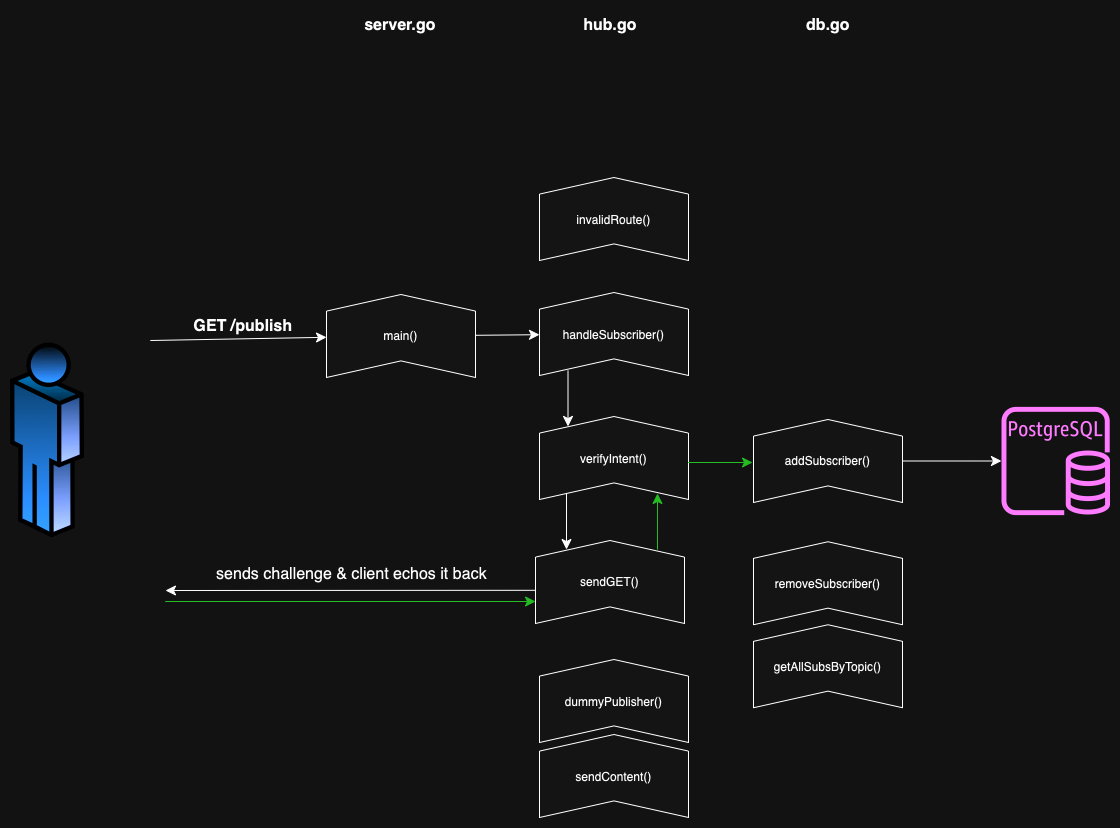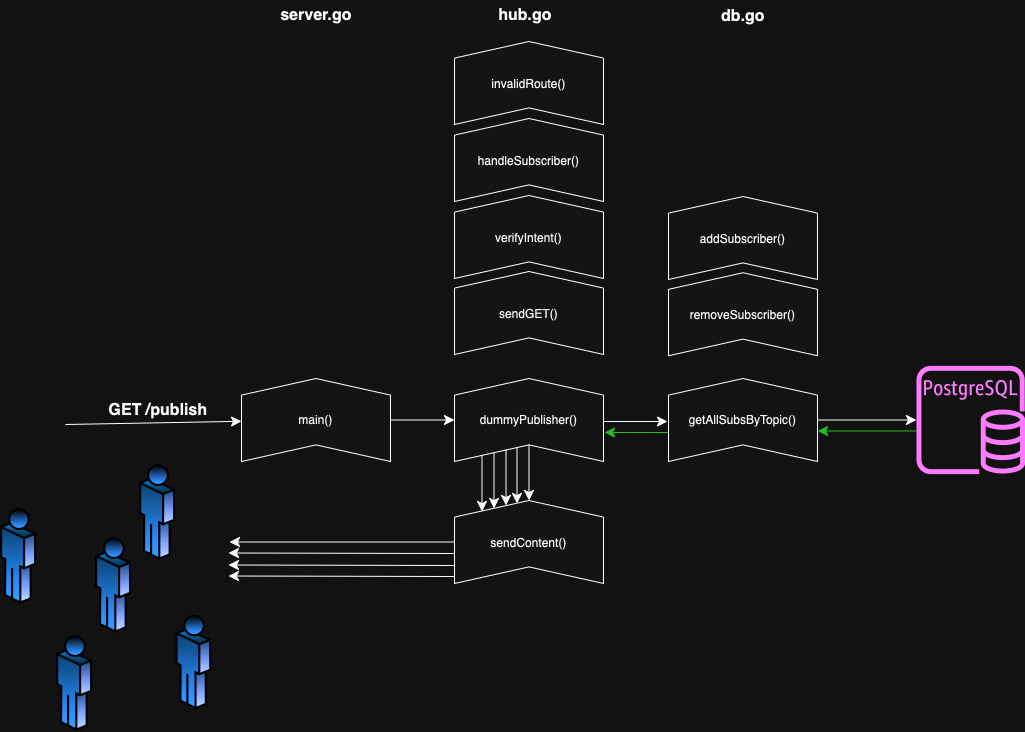Subhub is a small WebSub hub demo implemented in Go using echo, http/net, and Postgres. A live version of the hub is running here, listening for subscription to the topic "advice".
WebSub provides a common mechanism for communication between publishers of any kind of Web content and their subscribers, based on HTTP web hooks. Subscription requests are relayed through hubs, which validate and verify the request. Hubs then distribute new and updated content to subscribers when it becomes available. WebSub was previously known as PubSubHubbub.
- Accepts all subscriptions with
hub.callback,hub.mode, andhub.topicdefined. - If provided, stores
hub.secretfor HMAC signature when broadcasting published content. - Does NOT implement a lease period on subscription requests.
- Supports unsubscription requests.
- Sends distributed content as JSON.
- Sends
X-Hub-Signatureheader with all content distributions. - Allows user to resubscribe to already subscribed topics.
- Verifies every valid (required params are provided) subscription and unsubscription request.
- Generates and broadcasts content to all subscribers of the
hub.topic"advice".
POST /: Reads header for required parameters and handle subscription requests.
GET /publish: Acts as the publisher for testing, broadcasts content to subscribers.
server.go is the entry point to the server. It contains the main() function to the server where the port listener and routes are defined.
hub.go holds all WebSub Hub logic, and most of the code. The Hub is not concerned with how or where the subscriber data is stored, as long as the following functions are defined:
type hubStore struct {}(h *hubStore) init()(h *hubStore) addSubscriber(callback string, secret string, topic string, timestamp int64)(h *hubStore) removeSubscriber(callback string, topic string)(h *hubStore) getAllSubsByTopic(topic string) []subscription
db.go holds all Postgres logic: connecting to the database, creating tables, and making queries. All SQL and database code is contained within this file.
The following diagrams shows the main action flow through the hub, from client to database. The three columns represent the different code files and how they interract.
The diagram shows a successful subscription POST request to /. The request is first passed to handleSubscriber() where parameters are checked and read. If the requests contains everything to be verified, the information is then passed to verifyIntent() for verification. This function in turn uses sendGET() to send off the GET request. If everything is successful, verifyIntent() then calls addSubscriber() which sends INSERT query to the database.
The diagram shows a successful /publish call. The dummyPublisher() fetches all subscriber data from the database using getAllSubsByTopic(). For every stored subscription, sendContent() is called in parallel to broadcast the content to all relevant subscribers.
- Docker
The local demo uses modfin/websub-client:latest as a Subscriber and runs entirely in Docker containers. To run the demo:
docker compose up --build
The Subscriber will automatically subscribe to the Hub. To resubscribe send a GET request to (or open in a browser):
http://localhost:8080/resub
To distribute content from the Hub to the Subscribers.
http://localhost/publish
To view the successfully recieved content on the Subscriber:
http://localhost:8080/log
A live version of the hub (without the subscriber container) is running on https://subhub.henriknorrman.com.

